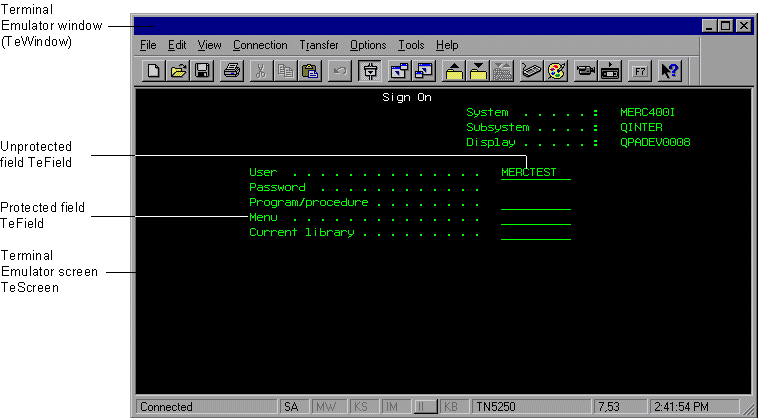UFT One can test terminal emulator applications that support HLLAPI (High Level Language Application Programming Interface) as well as those that do not, for example, emulator sessions configured to work with the VT100 protocol (using the Text-only option). HLLAPI allows a PC application to communicate with a mainframe application with extended capabilities.
When testing, UFT One distinguishes between the window of the terminal emulator and the screens in the host application. The terminal emulator window consists of the frame, menus, toolbar, and status bar of the terminal emulator itself. This window remains constant throughout each terminal emulator session.
The terminal emulator screen refers to the area of the window in which the application is displayed. Each time the host responds to user input to the application, the screen changes.

If your emulator supports HLLAPI, UFT One recognizes the screen and field objects in your emulator screen. If your emulator does not support HLLAPI, or you have configured UFT One in Text-only mode, UFT One records operations in terms of the text as it appears in the rows and columns of your emulator screen.
The UFT One Terminal Emulator Add-in includes preconfigured settings for several terminal emulators. The Terminal Emulator Add-in also enables you to configure the settings for most other terminal emulators using the Terminal Emulator Configuration Wizard Overview.











